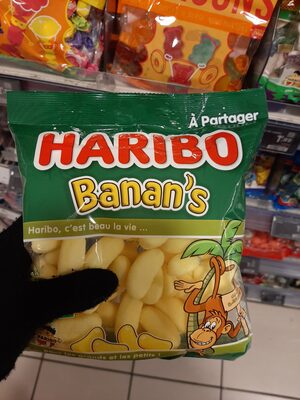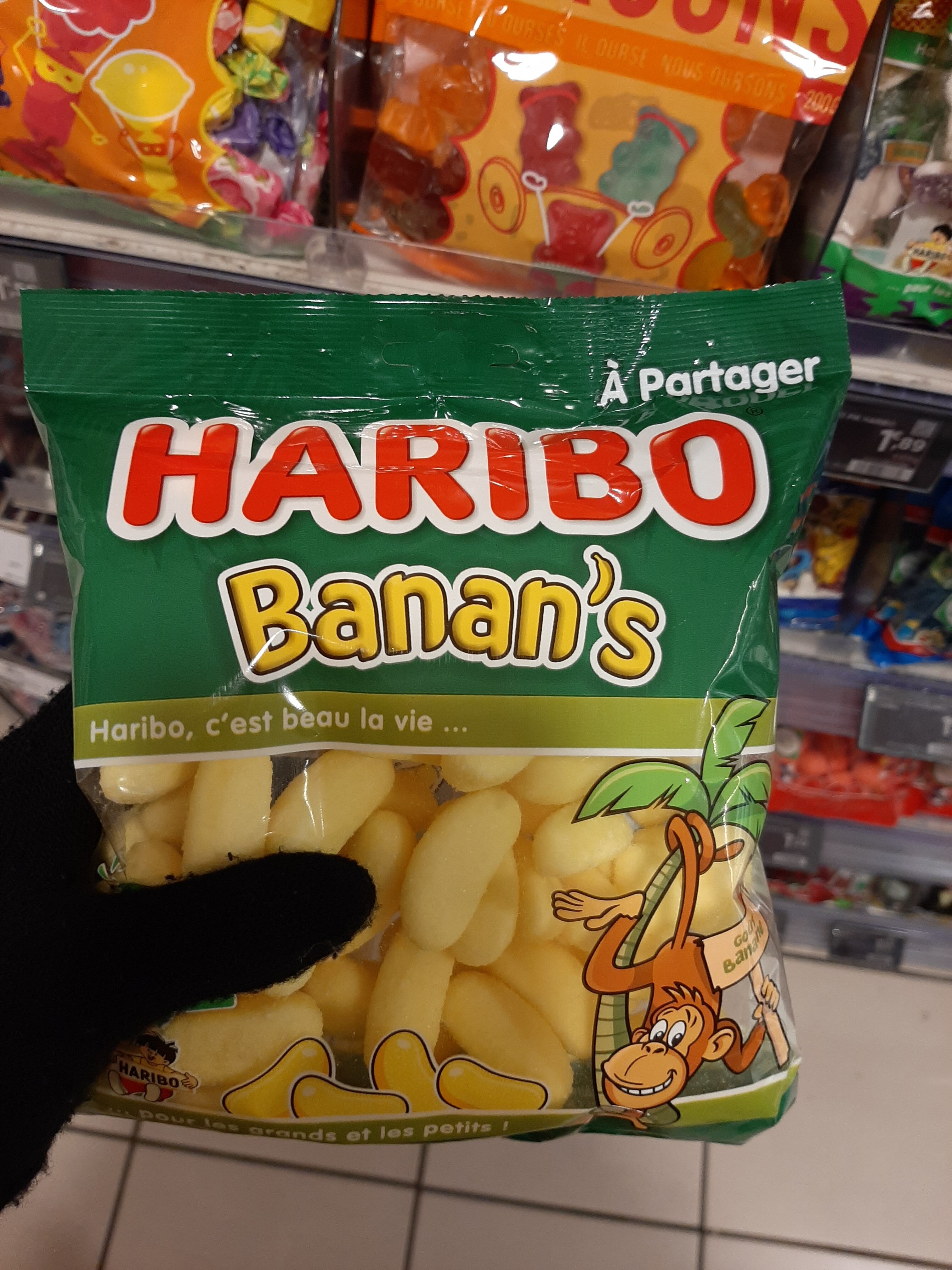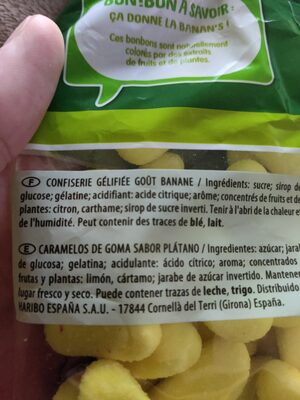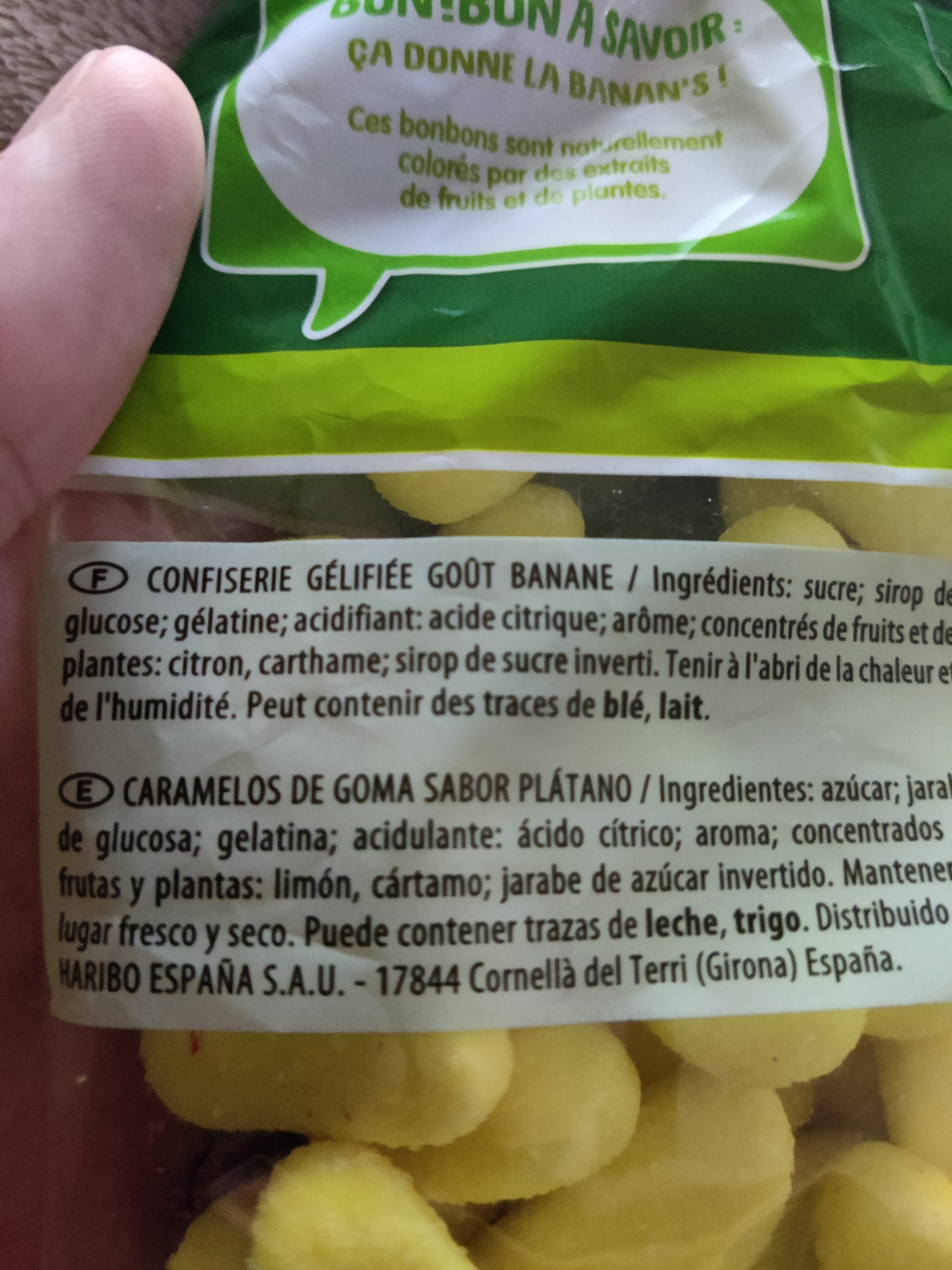Banan's - Haribo - 300g
This product page is not complete. You can help to complete it by editing it and adding more data from the photos we have, or by taking more photos using the app for Android or iPhone/iPad. Thank you!
×
Barcode: 3103220009659 (EAN / EAN-13)
Quantity: 300g
Brands: Haribo
Categories: Snacks, Sweet snacks, Cocoa and its products, Confectioneries, Chocolate candies, Bonbons, Candies, Gummi candies, Bonbons de chocolat, Bonbons gélifiés, Cacao et dérivés, Confiseries, Confiseries chocolatées, Snacks sucrés
Stores: Magasins U, carrefour.fr
Countries where sold: France
Matching with your preferences
Environment
Carbon footprint
Packaging
Transportation
Report a problem
Data sources
Product added on by openfoodfacts-contributors
Last edit of product page on by aiacciu.
Product page also edited by asusoff, dieteticienne, driveoff, ecoscore-impact-estimator, gluten-scan, halal-app-chakib, inf, julie-yuka, kiliweb, magasins-u, naruyoko, quechoisir, roboto-app, smoothie-app, telperion87, teolemon, yuka.R2FRZkxKdGNyTndEeThVQzlDUC93TU5TbTdXdGYwYXRGL012SVE9PQ, yuka.V2JrNEg0TllpL0FMeHRvRzJCT04vZmRweGE2WmVFYU5DZXN3SVE9PQ, yuka.VDY4cUdha0xsTjBGbWZFRThrMlBvdEpWNDRDU0JVV3dBTGMzSVE9PQ, yuka.VjZJWkZaMWNyZkl3d3ZCajFRT0wrL1pJMXJHc1pFeXZjYm9USWc9PQ, yuka.ZFAwL0Q3OG5qZDhRdmM4QytSSEs0KzV1bkxTdWQwanFPdGd3SUE9PQ.










